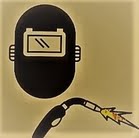Welding Insights
Category Title: Welding Insights
Welcome to our Welding Insights category, your one-stop destination for a wealth of knowledge and resources dedicated to the art and science of welding. Whether you’re an experienced welder, a novice looking to learn, or a professional seeking the latest industry updates, this category is your gateway to all things welding.
Explore a diverse range of topics, from welding techniques and best practices to the latest advances in welding technology. Our expertly crafted articles, guides, and tutorials provide valuable insights that can enhance your welding skills and keep you up-to-date with industry trends.
What You’ll Find in Welding Insights:
Welding How-Tos: Discover step-by-step tutorials and expert tips on various welding processes, including shielded metal arc welding (SMAW), gas tungsten arc welding (GTAW/TIG), gas metal arc welding (GMAW/MIG), and more. Learn the techniques that will help you create strong, reliable welds.
Welding Certifications: Dive into the world of welding qualification and certification. Understand the requirements for welder performance qualification (WPQ) and welding procedure qualification (WPQ). Stay informed about the latest updates in welding codes and standards.
Welding Safety: Safety is paramount in welding. Explore articles on protective gear, hazard awareness, and safe practices to ensure your well-being on the job.
Welding Inspections: Gain insights into non-destructive testing (NDT) methods, quality control, and welding inspection techniques. Learn how to identify and rectify common welding defects.
Welding Applications: Explore real-world applications of welding across industries, from aerospace and automotive to construction and manufacturing. Understand how welding plays a crucial role in building our world.
Welding Innovations: Stay ahead of the curve with updates on the latest welding technologies and innovations. Learn about cutting-edge equipment, automation, and digital tools that are shaping the future of welding.
Welding Community: Engage with fellow welders, share your experiences, and seek advice in our interactive forums and Q&A sections. Connect with a vibrant community of welding enthusiasts and professionals.
Whether you’re passionate about welding as a hobby or rely on it for your livelihood, our Welding Insights category is here to empower you with the knowledge and skills you need to excel in the world of welding. Join us on this journey of discovery and mastery, where the sparks truly fly, both figuratively and literally!
In industries such as Oil & Gas, Power, Marine, and Infrastructure, coatings are not just for appearance — they are a shield against corrosion, chemical attack, UV exposure, and harsh environmental conditions. However, even the best coating system can fail if the surface is not properly prepared, the environment is unsuitable, or the coating is […]
In the welding world, quality control isn’t just an optional step—it is the backbone of safety, performance, and reliability. Whether it’s a bridge, pressure vessel, oil pipeline, or aerospace component, every welded joint must be verified for integrity. Among the most widely used destructive testing techniques are macro tests (macroscopic examinations) and micro tests (microscopic
Welding is the backbone of modern fabrication and construction. Whether it is pressure vessels, pipelines, bridges, or structural components, weld quality directly determines safety and reliability. Among all welding defects, Lack of Fusion (LOF) — also known as Incomplete Fusion — is one of the most critical because it compromises both strength and integrity of
In the world of welding, quality is never an accident. It is the result of controlled processes, adherence to standards, and meticulous handling of consumables. One of the most overlooked yet critical practices in welding is the baking of electrodes. Whether in fabrication shops or large-scale construction sites, electrode baking ensures the elimination of moisture
Choosing the correct welding consumable is not just a technical requirement—it’s a strategic decision that directly impacts weld quality, service life, and overall project performance. An incorrect filler selection can lead to severe issues like cracking, porosity, reduced toughness, or premature corrosion failure. For industries such as oil & gas, power plants, refineries, fabrication shops,
In Engineering, Procurement, and Construction (EPC) projects, protective coatings play a vital role in safeguarding steel structures, pipelines, storage tanks, offshore platforms, and heavy equipment against corrosion and environmental degradation. One of the most critical quality checks in coating inspection is Dry Film Thickness (DFT) testing. DFT testing ensures that the applied coating has the
Gas Metal Arc Welding (GMAW), often referred to as MIG/MAG welding, is one of the most versatile and widely applied welding processes in modern industries. Known for its ease of automation, high deposition rates, and adaptability across materials, it has become a cornerstone in fabrication, automotive, pipeline, and construction projects. One of the most critical
In the world of welding, precision and quality are everything. A single defect in a weld joint can compromise strength, durability, and even safety. One of the most common and often misunderstood welding defects is undercut. Undercut is a groove or depression that forms along the toe of the weld bead in the base metal
The world’s most recognized quality management standard is evolving — but with a slight delay. Originally expected in 2025, the new revision is now scheduled for 2026. The decision came after the ISO/TC 176 committee issued a second committee draft (CD2) to refine structural and content challenges. This upcoming revision is not just a routine
Welded stainless steel components are prized in industries for their exceptional strength, heat resistance, and corrosion resistance. From chemical plants and refineries to food processing and marine applications, stainless steels are trusted for their durability. However, despite their superior performance, stainless steels are not immune to certain metallurgical challenges. One of the most critical of
